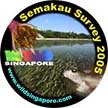
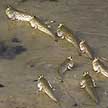
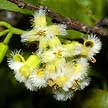
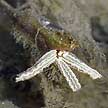
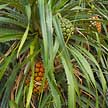
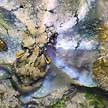
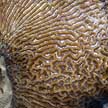
Preliminary results summary | plants | birds | fishes| other intertidal animals Summary
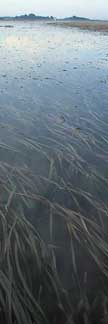 Vast seagrass meadows
Vast seagrass meadowsSemakau also has vast stretches of Tape seagrass (Enhalus acoroides) which is considered rare and vulnerable in Singapore. Tape seagrass makes up the bulk of the seagrass meadow at Semakau. This seagrass meadow stretches the whole side of the island we were surveying. Seagrass meadow also ocurred where there was a slight depression in the topography of the flat, hence its always submerged. The meadow with its thick cover of seagrasses, makes it an ideal habitat for juvenile fish mainly because it provides protection from predation. Theree other kinds of seagrasses were seen. Syringodium isoetifolium occurs intermittently within the Tape seagrass meadow. The other two seagrasses, Spoon seagrass (Halophila ovalis) and Needle seagrass (Halodule sp.) tend to occur in sandy areas which are exposed at low tides. Rare animals on the intertidal shores In previous surveys by smaller teams, we also came across many animals that are considered rare, vulnerable or endangered. These include Giant Clams and some varieties of corals. How is Semakau compared to Chek Jawa? The two shores are quite different. Semakau has vast stretches of coral reefs which Chek Jawa does not. And the seagrass area in Semakau comprises mostly of Tape seagrass, while Chek Jawa's seagrass lagoon has a variety of other seagrasses and Tape seagrasses are only found in smaller patches there. Much more work needs to be done to better document the amazing wildlife on Pulau Semakau. Besides the survey of 26 June, smaller teams of 12 made quick 1-2 hour visits during daylight low tides on 14 Dec 04, 12 Jan 05, 9 Mar 05, 10 Mar 05. |